https://www.handgunsmag.com/editorial/review-walther-ppq-m2-in-45-acp/137836James Tarr - September 29, 2015
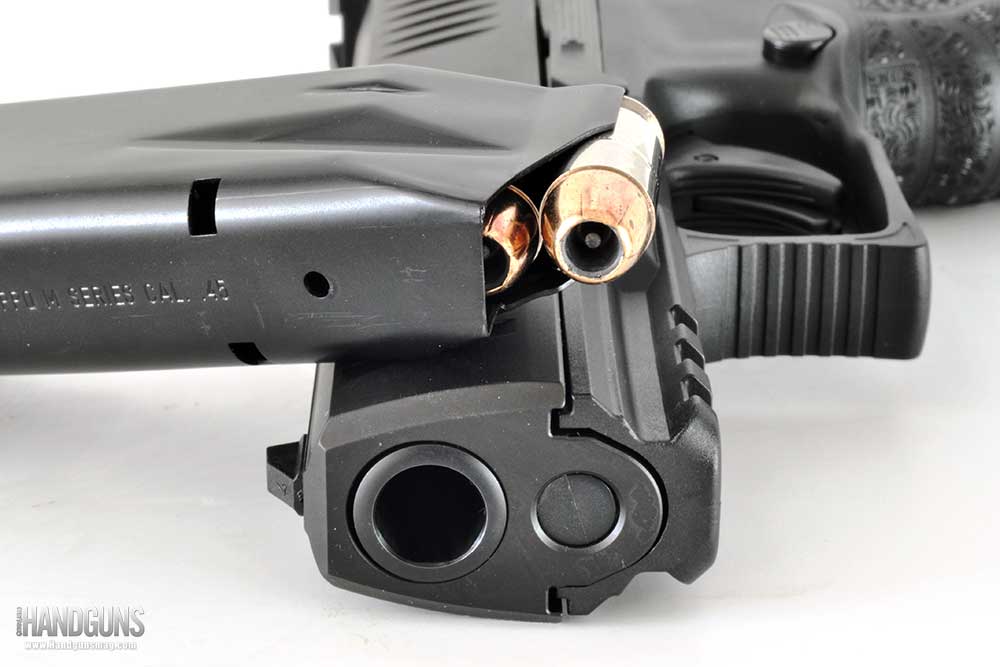
For the first time in its history, Walther is introducing a pistol chambered in .45 ACP: the PPQ M2 45. PPQ stands for Police Pistol Quick Defense, and M2 means it has the American-style magazine release button—as opposed to the paddle release on the original Walther PPQ. The button isn't reversible, but it is replaceable. The Walther PPQ 45 comes with the standard left-side button installed, but the company also includes a separate button meant for the right side to accommodate left-handers. Simple replacement instructions are in the owner's manual.
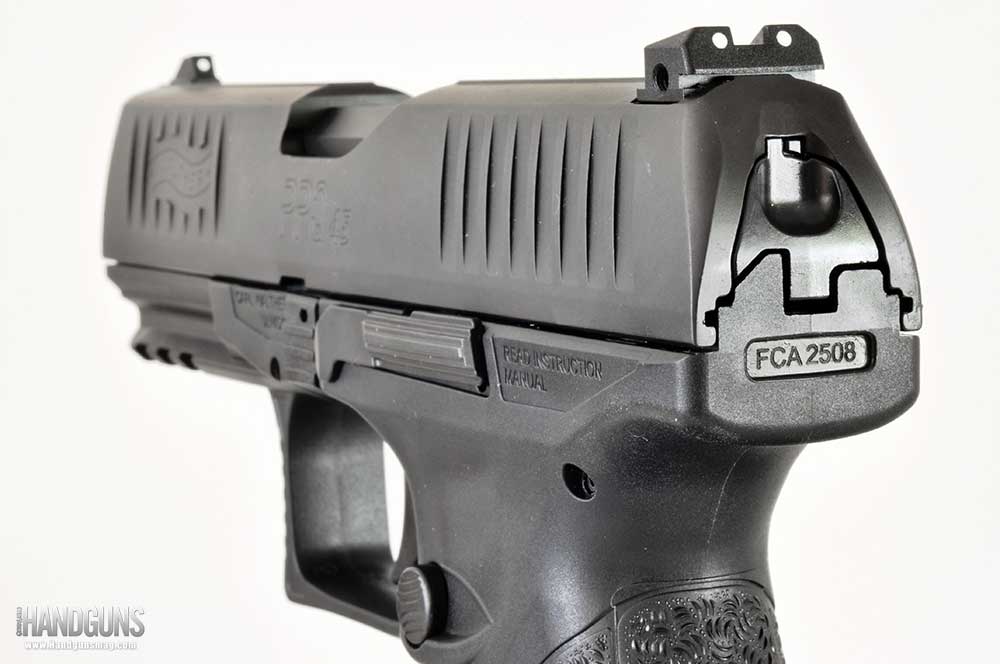
The new Walther PPQ M2 in .45 ACP is a full-size gun at 7.4 inches long, 5.8 inches high and 1.3 inches wide. When empty, the gun weighs 28 ounces.
The PPQ 45 has a 4.25-inch barrel, and it's 7.4 inches overall and 5.8 inches high, making it far larger than what most people will be willing or able to conceal. But since it has a polymer frame it is much lighter than many .45s. The barrel of the Walther PPQ 45 has an integral feed ramp that is polished at the factory, and it features polygonal rifling, which means you shouldn't fire lead bullets in it.
The Walther PPQ 45 is fed by a steel 12-round magazine (where legal), and two magazines are provided. The magazines have polymer base pads that flare slightly at the bottom, which helps if you have to strip a stuck magazine. They have numbered index holes at the rear at the four-, seven-, 10- and 12-round marks.
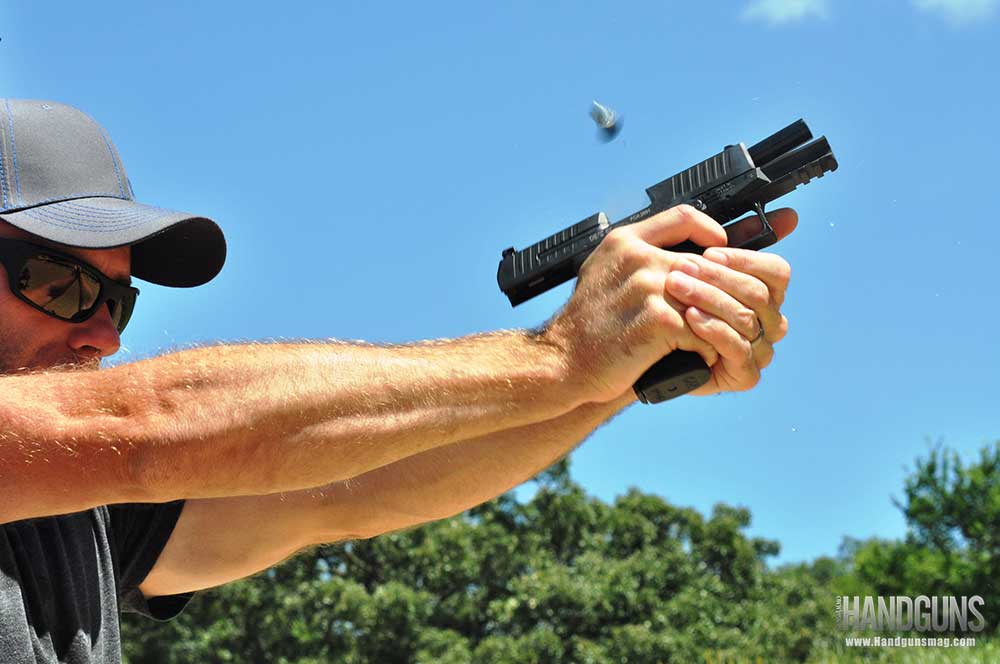
Despite its lightweight polymer frame, shooting the Walther PPQ 45 was pleasant, even with the author's injured hand.
The PPQ's distinctive slides are narrow at the top with curved sides. The top of the slide is serrated, and the pistol has flat-bottomed slide serrations front and rear that work nicely. Both the slide and barrel have a corrosion resistant matte black Tenifer coating.
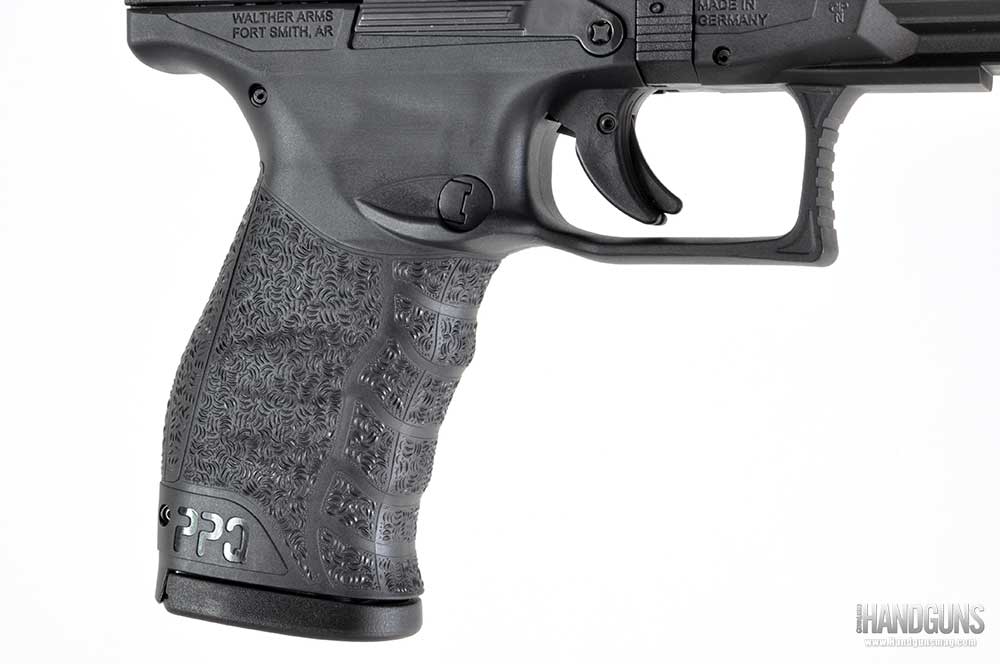
In addition to the grip texturing, the Walther PPQ 45 ships with two backstraps which are held in by a single roll pin at the bottom of the grip.
The Walther PPQ 45 has the ubiquitous three-dot sight setup, and the rear is adjustable for windage via a screw in the right side. My only complaint about the sights is they are plastic, not metal.
The PPQ's frame has subtle finger grooves and texturing, and I found myself wishing the PPQ's texturing was more aggressive. It's not slick, but it definitely could be a little more grippy. Unlike the 9mm and .40 versions, the Walther PPQ M2 .45 ships with only two interchangeable backstraps. The Small is installed on the gun, and the Large one puts extra material underneath the web of your hand.
Walther PPQs have the best trigger pulls of any full-size striker-fired gun on the market. The trigger pull on the test gun Walther sent me measured 4.25 pounds, with perhaps a quarter-inch of take-up before a crisp break. The trigger itself is pivoting and has a flat, serrated face with a manual safety lever.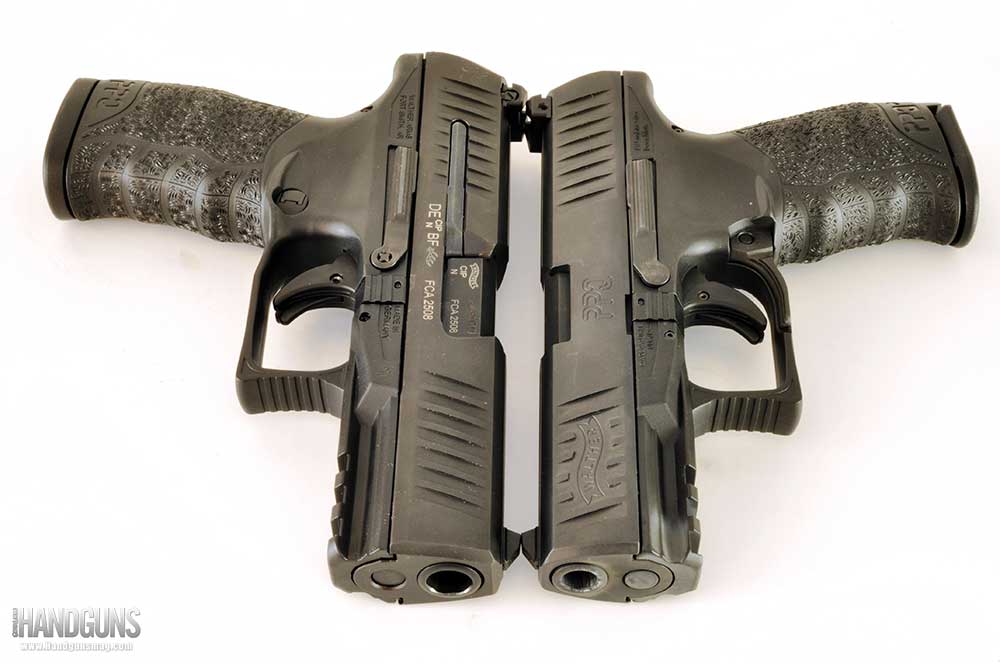
Despite the caliber increase, the PPQ 45 isn't much bigger than its 9mm cousin. The 9mm is .3 inches shorter and is the same height and width as the 45. It also weighs 4 ounces less. The 9mm holds 15 rounds, while the 45 holds 12.
The Walther PPQ 45 was pleasant to shoot. I attribute this to both frame material and bore height. Polymer flexes and absorbs some of the recoil forces; metal does not. And while the Walther 45 does have a higher bore height than, say, a 1911, it directs less force straight back into the web of your hand due to increased muzzle rise.
I first shot the Walther 45 after injuring my firing hand, and I found the reduced direct recoil force brought less pain. Most people aren't shooting with injured hands, but many people suffer from arthritis and joint pain. If you're one of them—or you're recoil sensitive—and have been wanting a .45 ACP, the Walther PPQ 45 may be for you. Actually, since it's pleasant to shoot, nicely accurate and completely reliable, it's a good option for anyone who thinking about buying a .45 ACP pistol for defense.